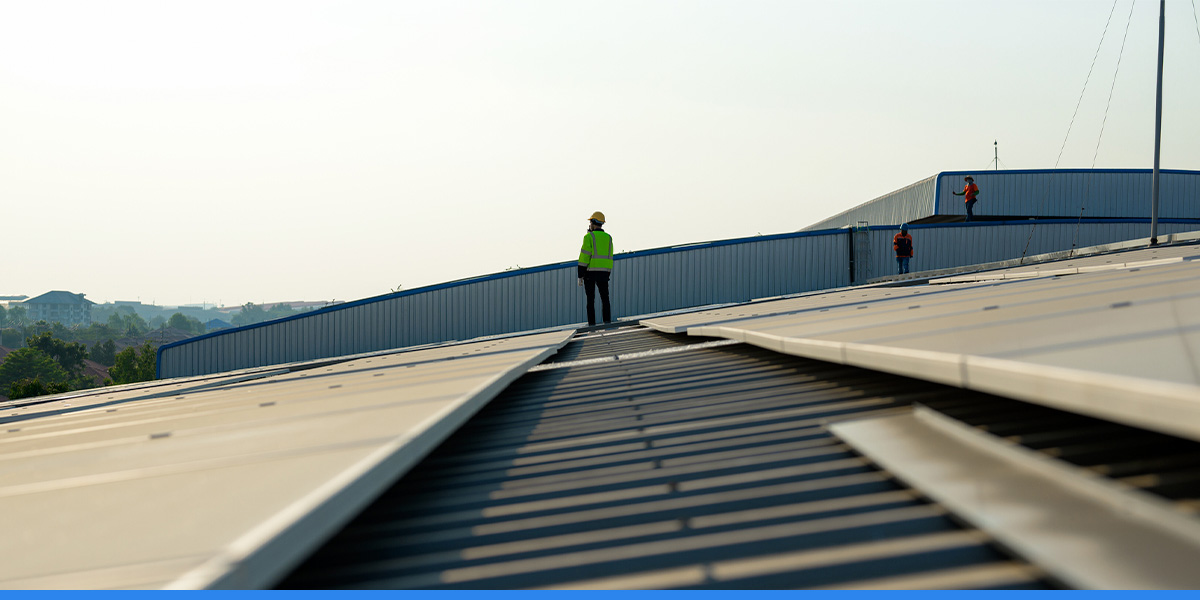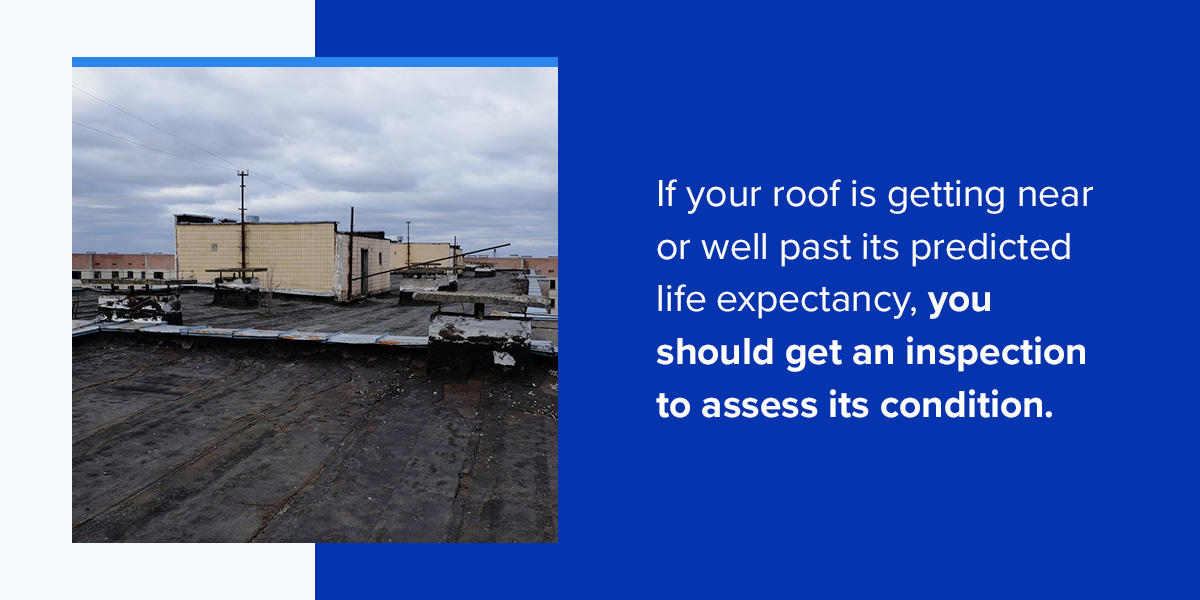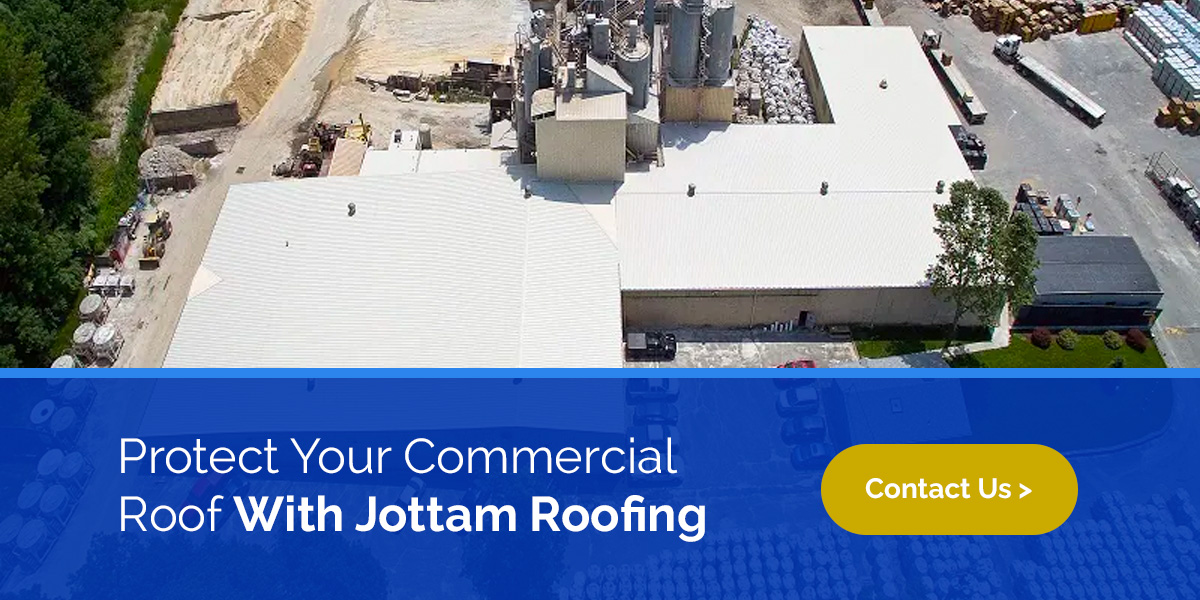
Commercial roofs have to face a lot of stress over the years. Storms, water and sunlight all contribute to wear and tear, breaking the components down and compromising your building. Regular inspections help you catch problems early so you can enjoy your roof for decades.
If you’re trying to keep your commercial roof in top condition, keep an eye out for these early warning indicators for roof inspections. They’ll let you know when you need to call a professional to examine your structure.
Getting a commercial roof inspection at least once a year is essential to protect your roof over the long term. After winter is a great time for a roof inspection — you can see if the snow and cold have done any damage to your roof and make any necessary repairs before the heat of summer sets in. While your exact commercial roof inspection frequency might vary, you should get them regularly to prevent problems from popping up.
Along with a planned professional roof inspection once or twice a year, you need to get an inspection if you’re seeing visible damage or other risk indicators. Staying on top of your roof inspections will help maximize your roof’s life span so you get the most out of your investment.
If you’re wondering when to get a commercial roof inspection, you probably already need one. Commercial roofs need routine maintenance and evaluation to ensure they’re in top condition. With regular inspections and prompt action when you see these warning signs of roof damage or wear, you can often catch problems before they become expensive or dangerous.
Visible damage on your roof, like cracks, blisters or tears, is a sign your roof needs immediate attention. If you can see a clear problem with your roof, you need a professional. These issues can expose your building to the elements, letting in water or leading to structural damage. Getting a roof inspection will tell you what’s wrong with your roof, how to fix it and how to prevent further issues.
Water damage comes in many forms, like leaks, water spots or pooling. If you notice any moisture in your facility’s interior, it could be a sign of potential issues with your roof. Once water gets inside your roof, it quickly soaks into your building’s components and can begin causing mold or structural damage. Get a roof inspection once you see leaks to assess the cause and get it under control before it worsens.
Pooling water is another sign you need a roof inspection. Pooling usually occurs when your drainage system is inadequate or backed up. With enough water accumulation, your roofing materials will break down, allowing moisture into your building. When you see standing water on the roof, it’s time for an inspection to identify the source of the problem and take corrective action.

Like any part of your building, your roof has a limited life span determined by its materials and construction. If your roof is getting near or well past its predicted life expectancy, you should get an inspection to assess its condition. Older roofs will degrade more quickly as their components weaken, so it’s wise to have a schedule for regular commercial roofing checks to catch any potential problems early.
Regular roof inspections will allow you to strategically plan your maintenance practices until you’re ready to invest in a replacement. With this proactive approach, you’ll extend your roof’s life.
Finding mold or mildew means you’ve got a water problem, and a compromised roof could be the culprit. Mold can cause irritating or dangerous health conditions, impacting anyone who enters your building. If you spot mold, it’s important to find the root cause and address it before it causes further concerns or health risks.
Sagging or uneven roof areas could mean you’ve got a structural problem on your hands. A sagging roof might indicate framework issues like compromised trusses or weakened load-bearing components, possibly due to water damage. If left unaddressed, these structural issues could lead to more severe problems and safety hazards. With a roof inspection, you can get a professional opinion on the damage and what you need to do to make your roof safe again.
Take a look at your roof and see if there are any loose or missing materials like metal coping, loose seams or other components. Loose or missing materials let water get inside your roof and allow the elements to compromise your insulation. Additionally, areas with loose roofing are likely to worsen in high winds, leading to further damage. If you spot missing materials, call for an inspection to see what’s going on with your roof and how to fix it.
If the energy bill for your commercial building suddenly spikes with no obvious cause, you might want a roof inspection. Poor insulation, holes in your roof, or ventilation issues can significantly impact your building’s energy efficiency. With improper roof conditions, treated air escapes, impacting the building’s temperature and making your heating and cooling system work harder to maintain your indoor climate. Finding and fixing any issues may bring your energy bills down and help improve your roof’s overall health.
Your commercial roof is constantly exposed to the elements and endures regular wear and tear. If you experience lots of severe weather events like intense downpours, hail and high winds, you need regular roof inspections to ensure everything is holding up. Even if the damage isn’t easily visible, it might get worse over time.
Getting a professional inspection when you suspect storm damage can help uncover potential weak points and areas in need of repair so you can act quickly to address them.
Jottan Roofing is your go-to source for everything related to commercial roofing. We offer expert commercial roofing services to businesses that need repairs, replacements, inspections, maintenance and more. With our decades of roofing experience and dedication to our customers, you can count on us to provide everything your roof needs. Find a location near you or contact us online to schedule your commercial roofing service today!
